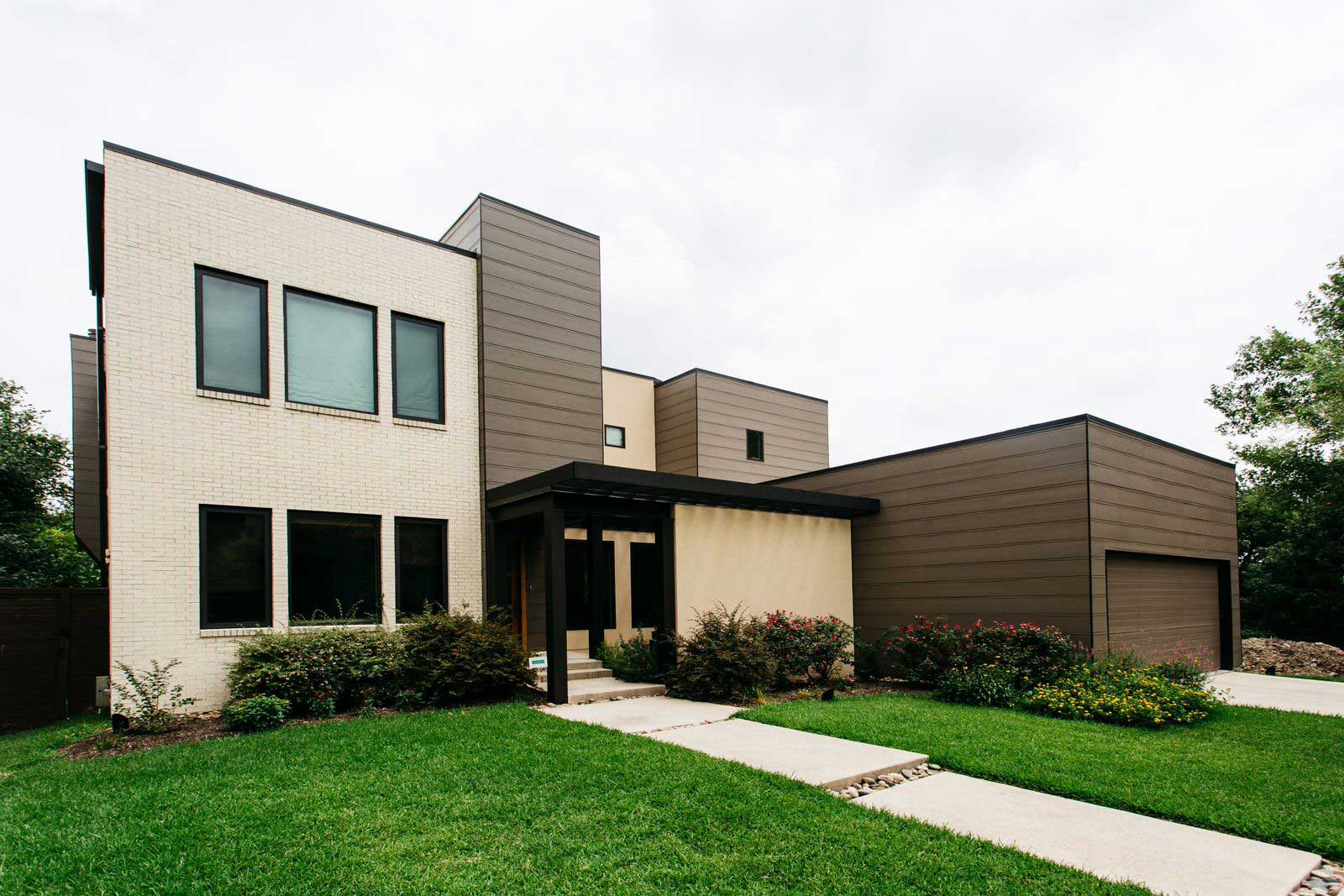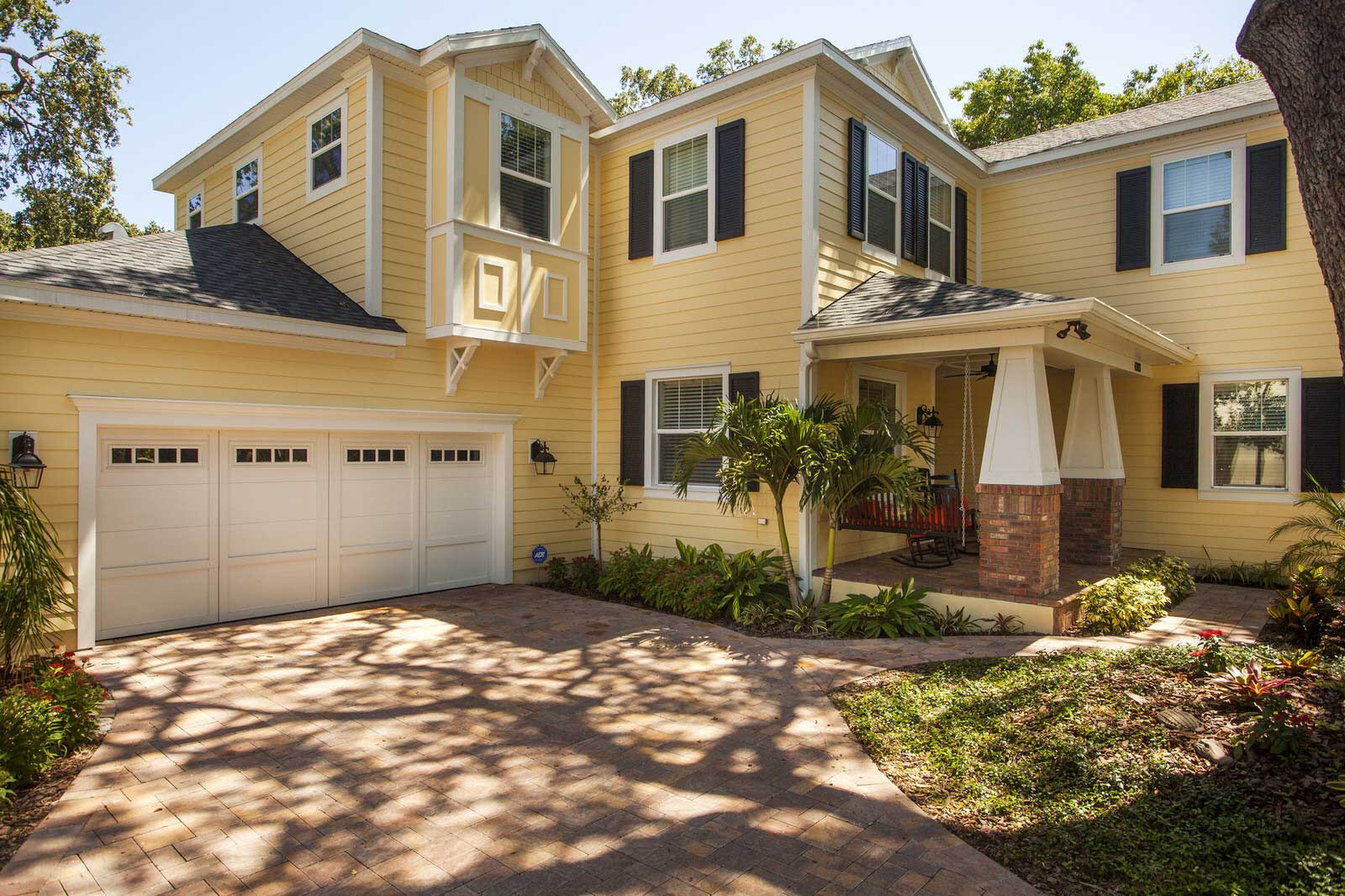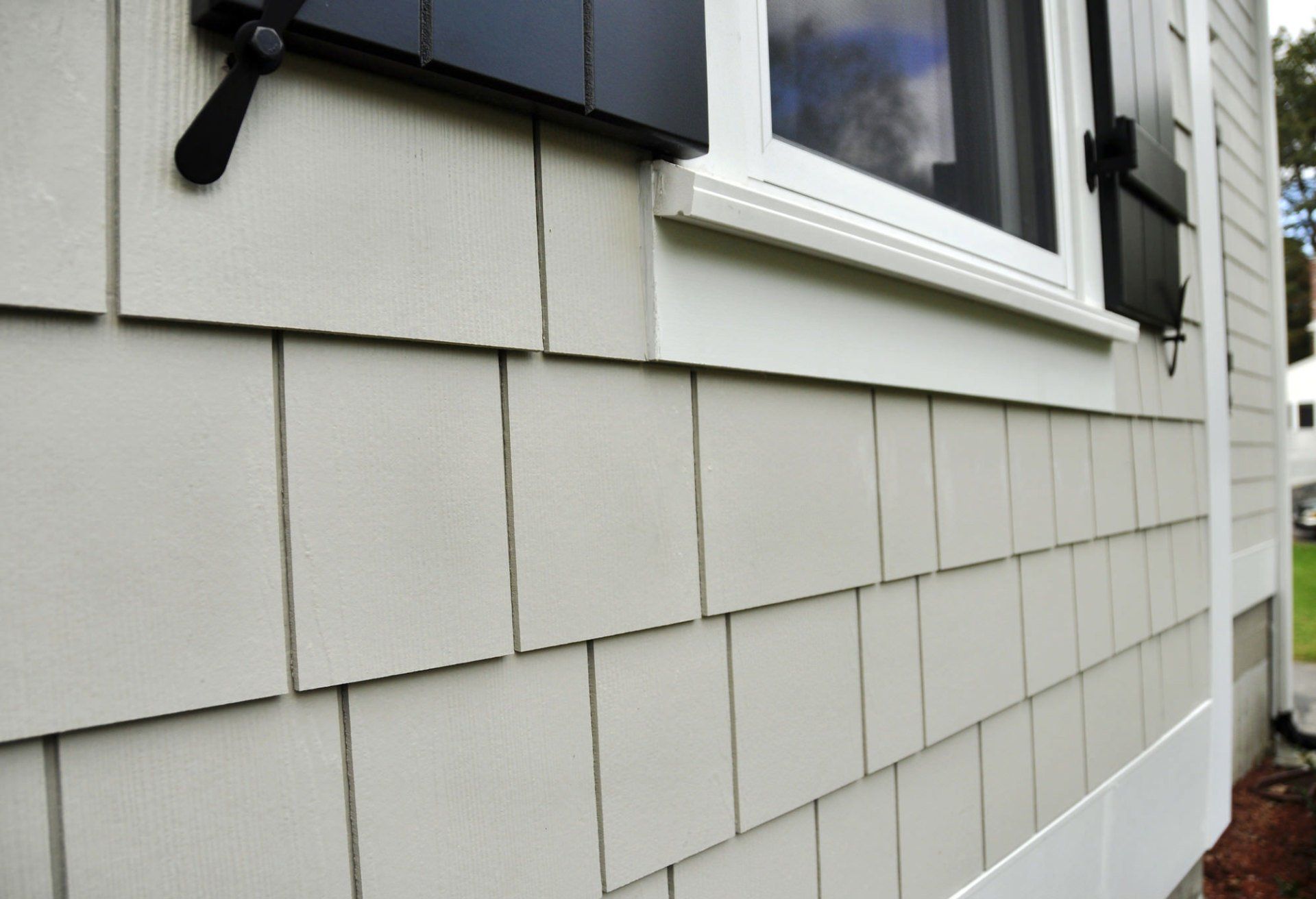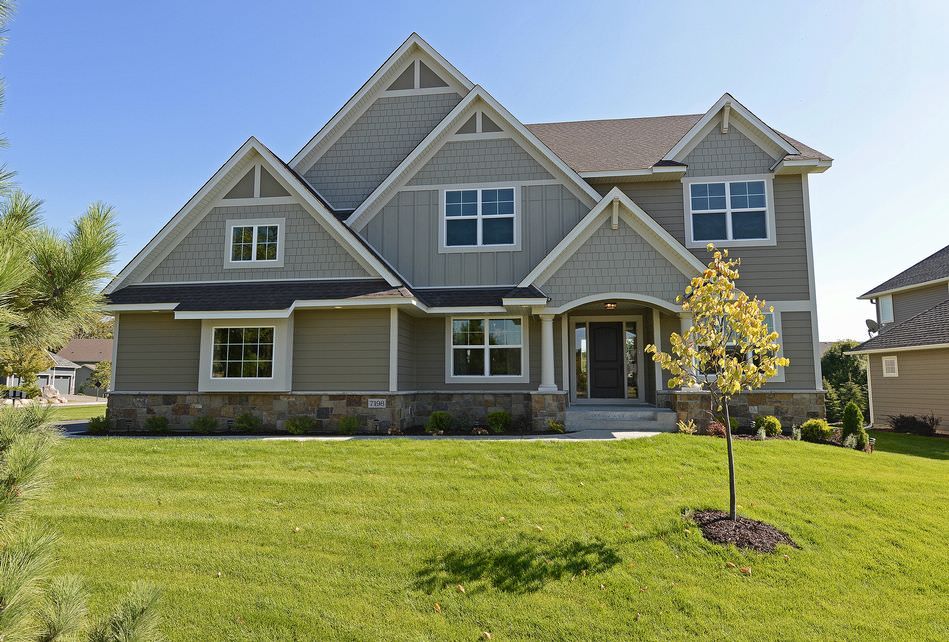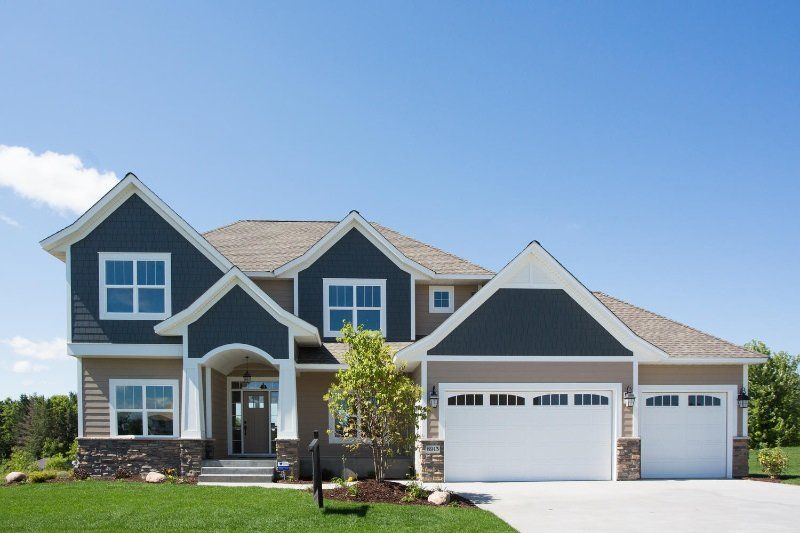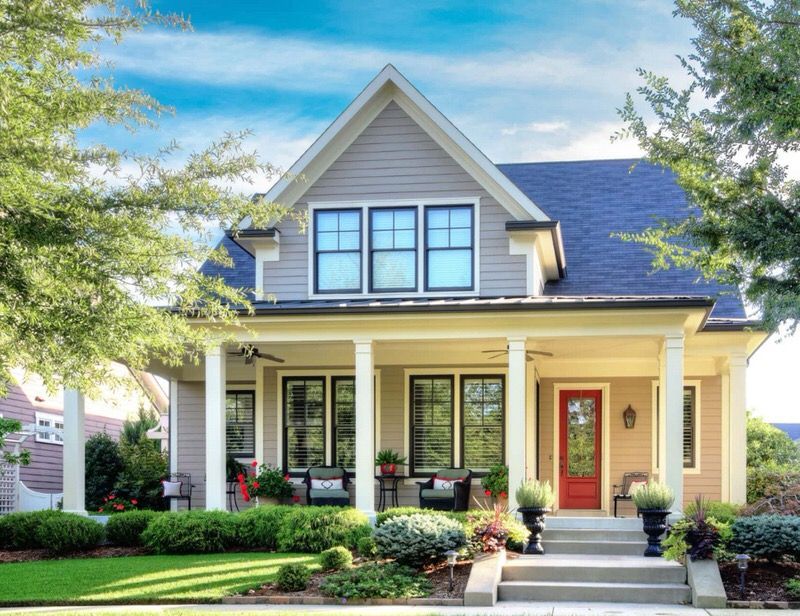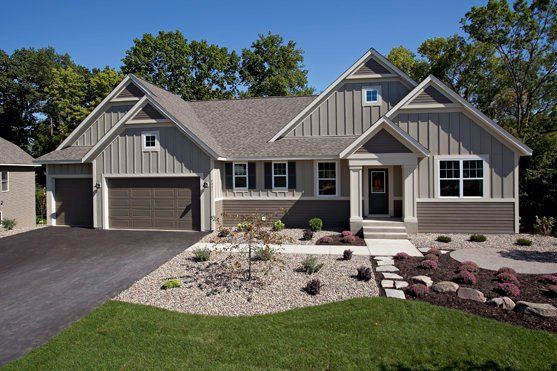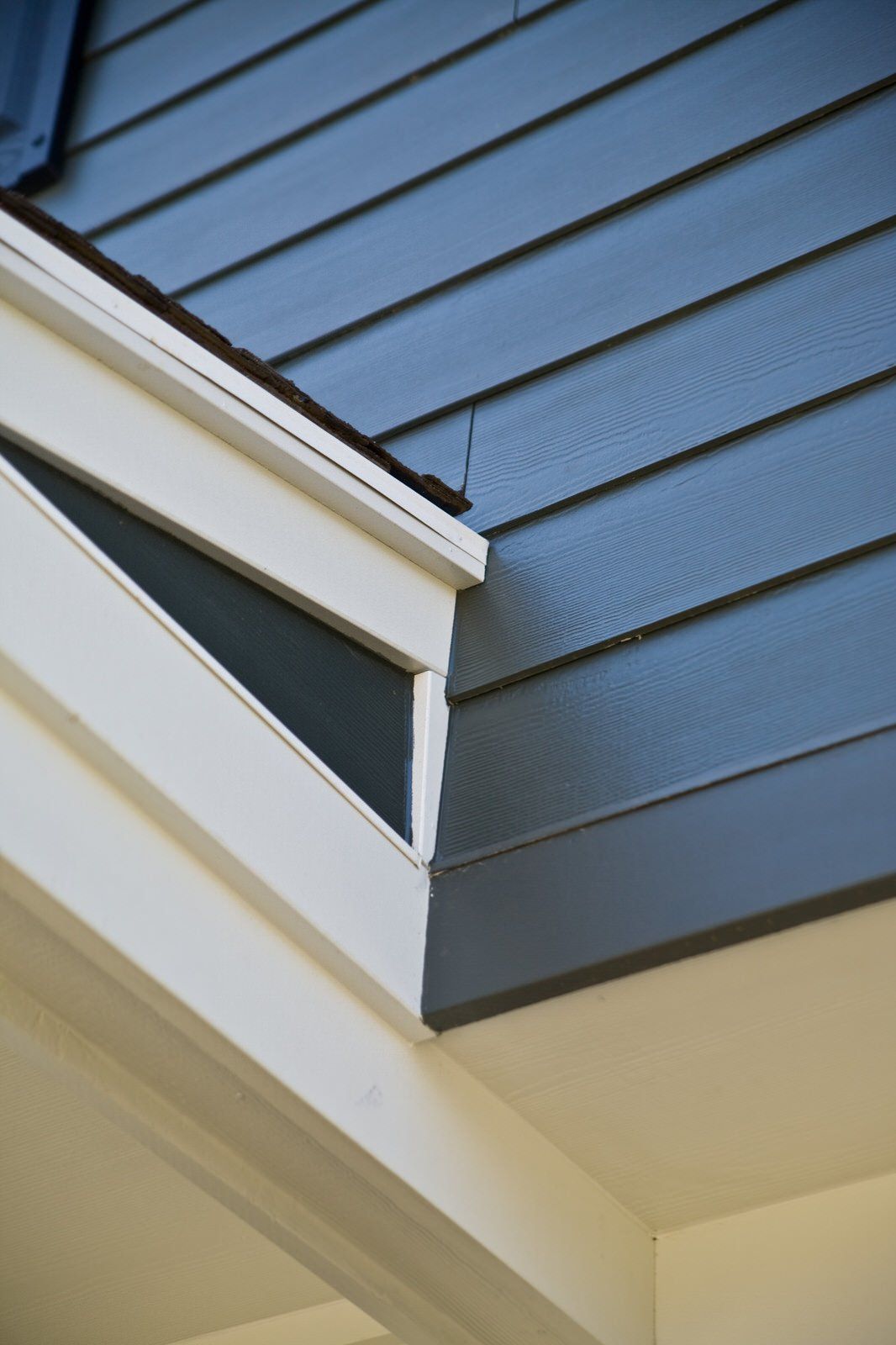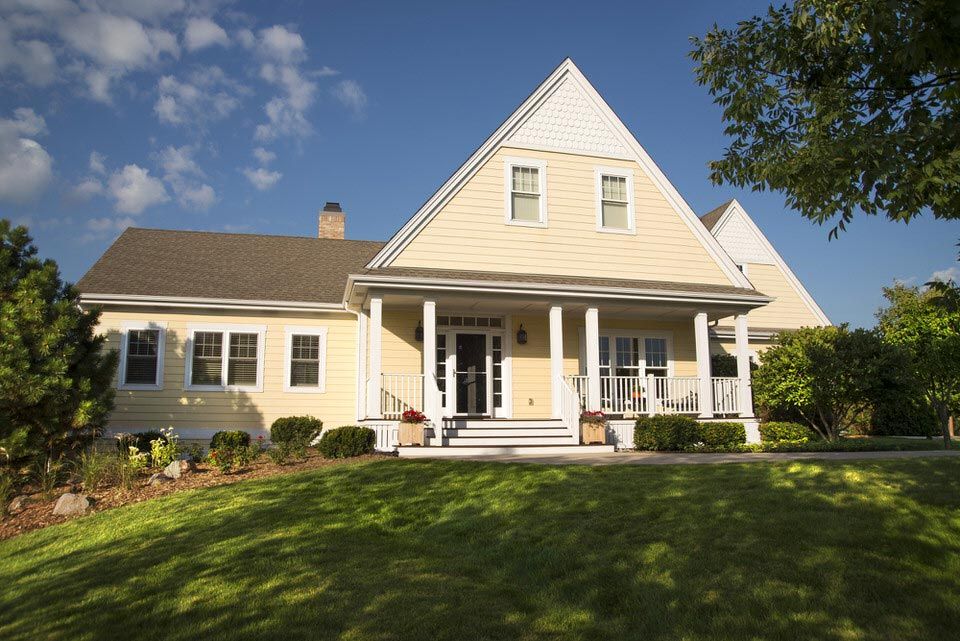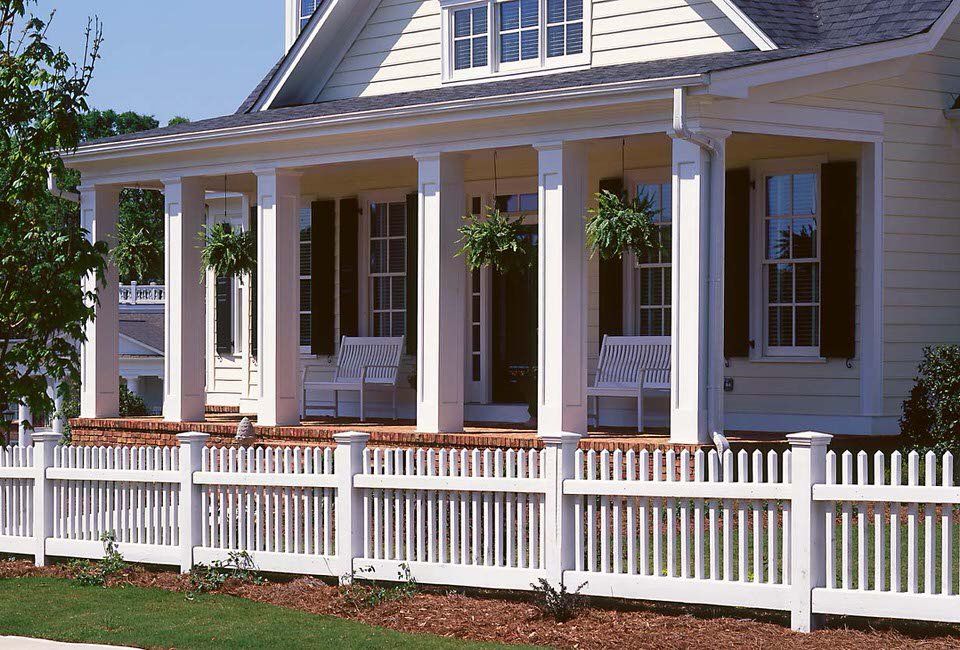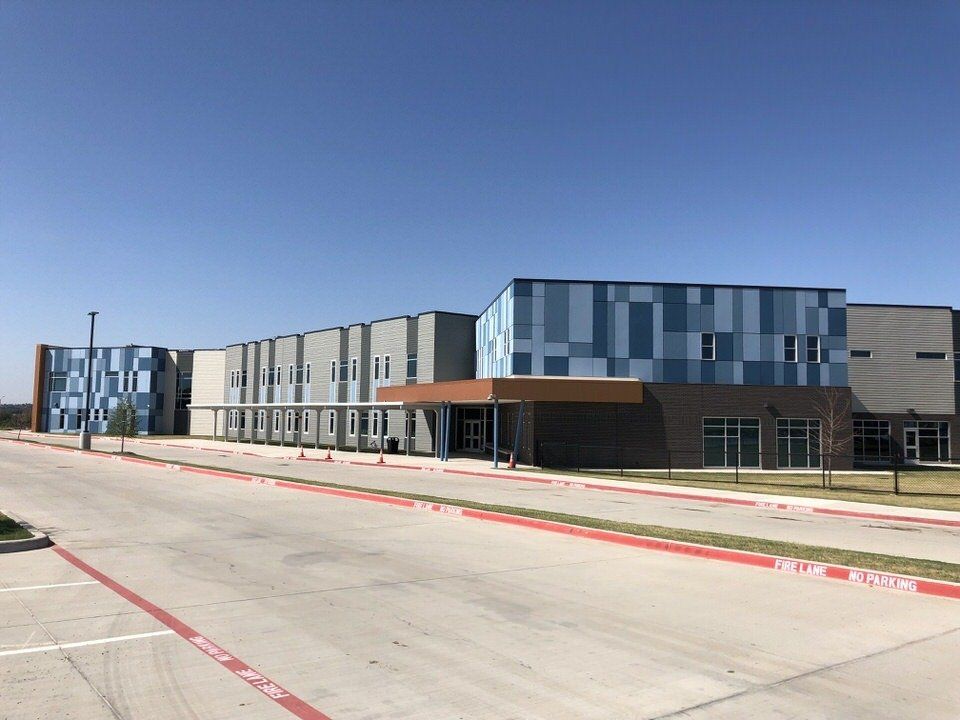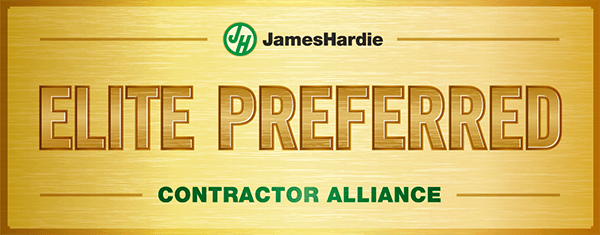'Learn about Fiber Cement Siding' Articles
EXPLORE SIDING COLORS
SIDING PRODUCTS
COMMERCIAL SIDING
The Cost Comparison Guide for 2020/2021
Our fiber cement siding vs vinyl siding cost comparison guide will help you decide the right siding to enhance the aesthetics and value of your home.
Before comparing fiber cement and vinyl siding, it’s important to discuss the importance of siding briefly. Why should you incur any cost installing siding?
Why Siding?
I. Protective Benefits: Siding protects the OSB/plywood sheathing covering your home’s exterior.
Most housing developments composed of wood-framed houses have OSB (oriented strand board) as exterior sheathing. While OSB is superior to particle boards (when used for exterior applications), it tends to absorb water when exposed. It is also susceptible to damage by insects and pecking by birds.
II. Low Maintenance: Fiber cement and vinyl siding require less maintenance than wood siding. There's no need to paint, stain, or treat the siding frequently to prevent rot
III. Low Cost: Siding costs less than bricks
IV. Aesthetic Benefits: When installed properly, siding will look great for decades.
V. Energy Efficiency Benefits: Siding improves a home’s energy efficiency. Installing siding is a great way to insulate your home from losing heat excessively during winter. Siding also keeps homes cool during summer.
What is Fiber Cement?
Before comparing fiber cement and vinyl siding, it’s important to define both.
Fiber cement siding is a building material popularly used to cover the exterior of residential and commercial buildings. The siding is composed of cement, sand, and cellulose fibers. This combination offers notable benefits like resistance to rot, pests, fire, and impact. The siding also mimics traditional wood siding perfectly in regards to looks and installation.
Fiber cement siding has many names, the most notable being HardiePlank® Lap Siding, HardieShingle® Siding, and HardiePanel® Vertical Siding coined from the most popular fiber cement siding brand – James Hardie.
What is Vinyl Siding?
Vinyl siding is a plastic exterior siding commonly used for weatherproofing and decorating homes and apartment buildings. The siding imitates wood clapboard, batten, board, or shakes. The main "ingredient" in vinyl siding is polyvinyl chloride resin or uPVC. Insulated vinyl siding contains rigid contoured insulation that has been permanently adhered to the siding.
Fiber Cement Siding vs Vinyl Siding: Comparison Factors
1. Colors and Styles
Both vinyl and fiber cement siding are available in a wide range of colors. However, fiber cement offers the best variety of colors and styles. The siding can also be repainted easily. It’s also possible to find fiber cement siding that isn’t primed or painted. This allows more versatility if you prefer custom colors.
While vinyl siding may appear cheap to buy, it’s not. You must spend considerably to get good vinyl siding. The cheapest siding isn’t the best. It’s usually thinner (about 0.040) and limited in regards to color and style. When selecting the best-of-the-best siding in regards to colors and styles, there’s very little difference in cost.
2. Texture
HardiePlank siding is thicker, allowing deeper texturing than vinyl siding. The siding allows deeper embossing and offers a more realist wood-like appearance. Vinyl siding is too thin for deep textures like those on HardiePlank siding. While low-end vinyl siding costs less, it’s not worth it for someone who is installing siding for that deep wood-like texturing, among other reasons.
3. Price
On average, fiber cement costs range $3-$3.50 per-square-foot which is twice the cost of vinyl siding according to Dale Knox - Product Manager, James Hardie. According to the latest 2020 national averages for the west south central region, the price of fiber cement siding replacement ranges between $14,961 and $17,008 while that of replacing vinyl siding ranges between $12,639 and $14,359. However, fiber cement has a high cost recoup average at 77.6% against vinyl’s 74.7%.
Fiber cement siding is pricier but obviously compensates in many other ways such as recouping the cost and offering better color and texture variety.
4. Durability
Both fiber cement and vinyl siding are more durable options when compared to natural materials like wood. Their durability has a cost advantage. While wood siding has unmatched beauty, it is susceptible to sun damage and rot, meaning you must incur additional costs of maintenance and eventually replace it.
Both fiber cement and vinyl can last for decades. However, in a state like Texas with extreme heat and hail in some cases, fiber cement is obviously better.
What’s more, James Hardie fiber cement siding comes in different designs depending on where the siding will be installed. The siding’s engineered design specific to area and climate offers more durability.
While Vinyl can last long, it does better in moderate areas where temperatures aren’t extreme (too hot/too cold). In Texas, fiber cement siding will outlast vinyl siding any day!
If you buy fiber cement siding with a good guarantee and have it installed properly by professionals, it should last 30 years+. James Hardie siding (The HardiZone System) engineered for climate lasts decades whether you live in a hot, freezing, wet or humid area. The siding comes with a 30-year limited transferable warranty.
If you live in Texas, you can select HardieZone 10 (HZ10) siding that defies blistering sun, hurricane-force wind and sheets of rain.
5. Insulation and Energy Efficiency
Vinyl siding has a higher R-value than fiber cement i.e. (0.6 R-value) against (0.5 R-value). Adding foam-backed siding improves Vinyl siding’s R-value further (to 1.8 or more). Both sidings can be enhanced using underlayment (such as a foam board) without increasing the overall cost significantly. Pumping insulation can also improve the R-value of both sidings.
6. ROI (Return On Investment)
When you spend money on siding, you want to know if it's worth it. If you made the investment and wanted to sell your home, would you recoup your money, assuming the siding is in great condition?
Well, for 11-straight years, James Hardie fiber cement siding has offered the highest ROI for upscale home remodeling projects. Home owners can take on many other remodeling projects, however, siding your home with fiber cement siding is a “sure bet”.
Fiber cement siding offers unmatched aesthetics and boosts the resale value of many homes. According to the 2020 national averages in the Remodeling Cost vs. Value report, fiber cement siding is only second to stone veneer siding at an ROI of 77.6% in the list of top remodeling projects to undertake based on returns. Vinyl siding remodeling projects offer a lower ROI at 74.7%.
7. Installation Costs
Do-It-Yourself enthusiasts care deeply about installation costs. While both fiber cement and vinyl siding installations can be DIY projects, siding needs to be installed by experienced, professional siding contractors.
In a nutshell, fiber cement installation costs are bound to be higher than vinyl siding installation costs. Fiber siding is heavy and may require more than one person to install. However, the lifespan of both sidings can be compromised by poor installation. It’s recommendable to hire experts instead of undertaking a DIY project that can compromise your results, durability and void your warranty.
8. Maintenance Costs
Fiber cement siding undergoes a special curing process that makes it less prone to breaking and cracking. The siding is designed to absorb less moisture compared to other siding. Coupled with ingredients like cement mixed into the boards, fiber cement siding can withstand the harshest weather (strong winds, hail, storms and other adverse weather events. The siding is also fire-resistant and won’t rot or suffer any insect damage.
However, just because it’s extremely strong and durable doesn’t mean it should be neglected. An annual cleaning to remove dust is more than enough. James Hardie provides maintenance guidelines for their siding that are worth reading to maintain your investment.
Vinyl siding also needs yearly cleaning but doesn’t handle pressure washing as well as fiber cement siding. As a result, vinyl siding may need more costly cleaning.
Summary: Fiber Cement Siding vs Vinyl Siding Cost Comparison
Both types of sidings have notable pros and cons revolving around cost. However, fiber cement siding stands out. The siding’s color and style variety coupled with deep textures offer notable appearance advantages over vinyl siding.
The most notable advantage of vinyl siding is the lower initial purchase cost. However, you must spend more to buy the best (thicker) vinyl siding. The cheapest options are usually thin and don’t last as required resulting in additional costs in the future.
While vinyl siding is more suited for DIY installation, both vinyl and fiber cement siding must be installed by professionals for them to offer all their benefits. Unless you are skilled in installing siding, it’s better to rely on professionals. Siding professionals can also help you choose the best siding for your home.
Check our wide range of fiber cement siding products and fiber cement siding colors here.
Serving Dallas, Texas and the
State of Texas since 1991.
© 2020 Preview Construction Partners Ltd. All Rights Reserved

